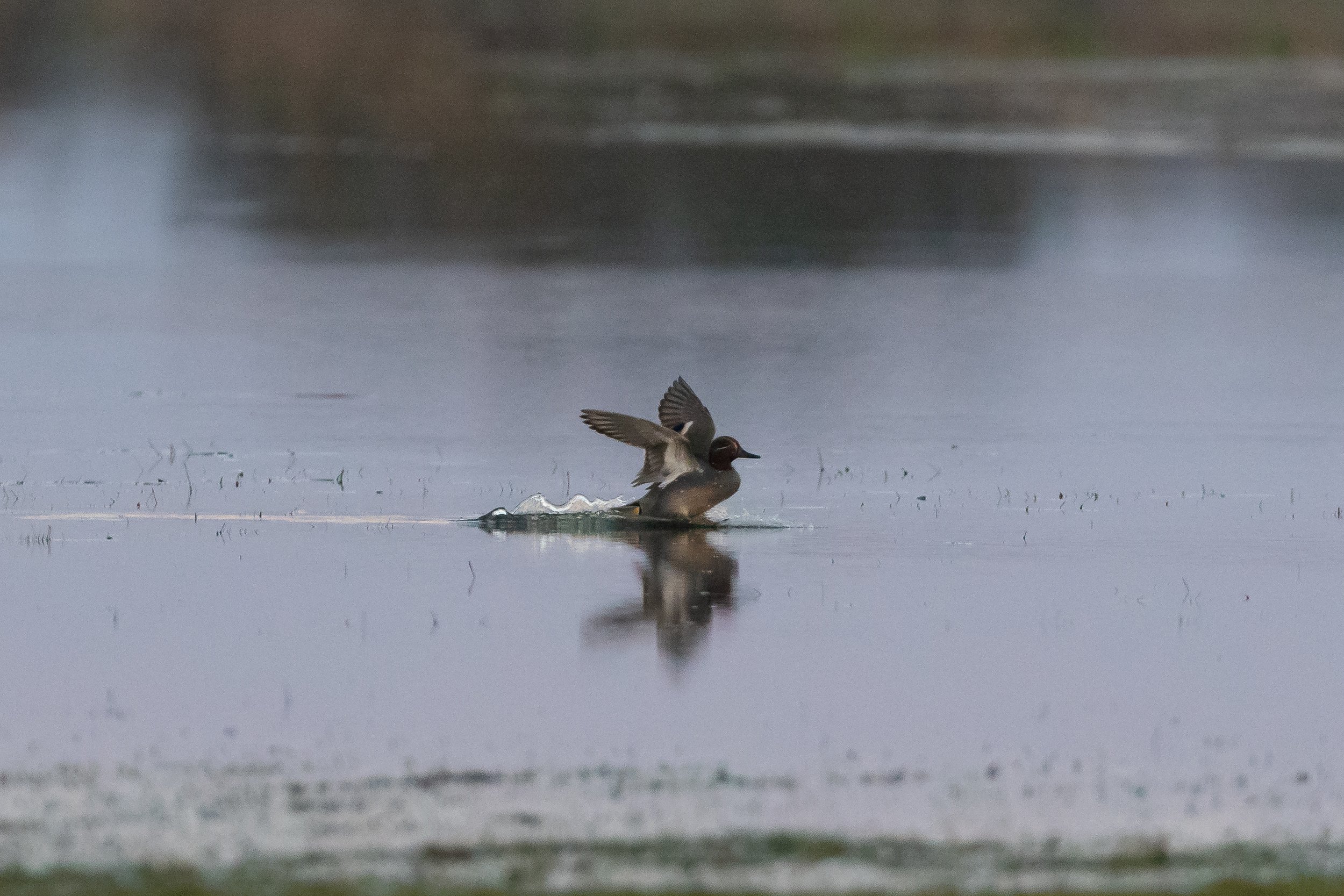February Fill Dyke -A rural appellation for the month of February, when rain or melting snow fills dykes with water, says Wikipedia.
That has certainly been the case of late and the dykes are literally fulll as are the fields and everywhere underfoot is somewhere between soggy and boggy.
It would appear that has had no detrimental effect on the birds, in fact in the case of Long Bank Marsh, it has come into its own this winter, it seems the more water the better it gets.
So my plan was to hear there early on Saturday morning and as the forecasted mist didnt materialise the light was quite good.
The morning got off to a good start with a barn owl then got even better when I saw the overwintering whimbrel amongs curlews and redshank.
There were plenty of wildfowl, mainly wigeon with the odd shoveller, teal, gadwall and mallard.
There werent as many different species of wader as I thought there would be and I’m pretty sure that was to do with the size of the tide. Neap tides barely touch the floodbank especially when held back by the wind and that seemed to be the case.
An unusal call had me scrambling about trying to locate a wader above as it flew in, I eventually managed a couple of flight shots and it settled on the edge of a pool at the west end. It was a spotted redshank-another wafer species overwintering in the UK when really it should be somewhere in Africa.
I packed up aroung half nine and made my way back to the caravan.
We had a nice walk around Kilnsea which was made even better when we went through Church Field. We stopped to chat to Jacob Spinks and literally 10 steps after we set off again he shouted us back as he has clocked the juvenile pallid harrier over North Field. Only fleeting views but very nice all the same. We carried on and headed towards the clifftop a single stonechat was the only bird of note.
We wandered back along the road and were treat to prolonged views of a barn owl as it hunted at midday.
After a spot of lunch I headed out to Skeffling in the hope of connecting with the Pallid Harrier.
I parked on the top of the bank and looked west.I immediately saw a harrier in the distance so set off hurredly.
I looked through my bins and saw a bright white rump and immediately thought ‘hen harrier’ it then made its was purposefully in a north easterly direction, giving good views of oits underwing, the ‘four fingers’ of its wingtip confirmed my thoughts=pallid harrier!
Not as rare as they used to be but this finely marked individual was the undoubted highlight of anothe cracking weekend at Spurn.
Sunday morning dawned grey and wet but I had an hour in the hide again on Long Bank Marsh with nothing different from the previous day.





















